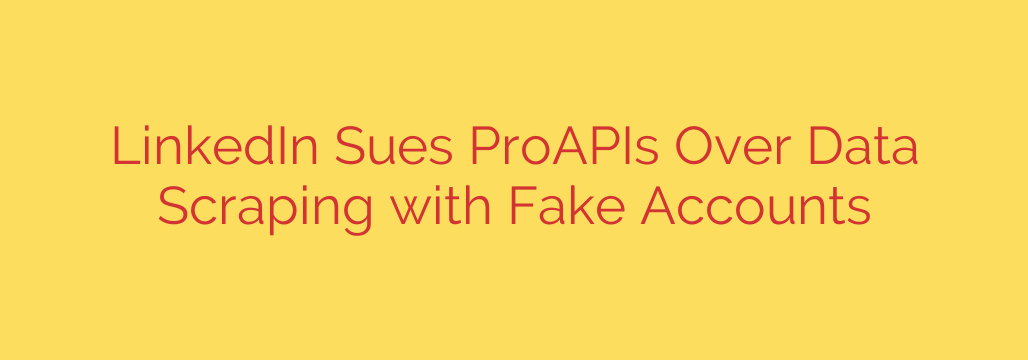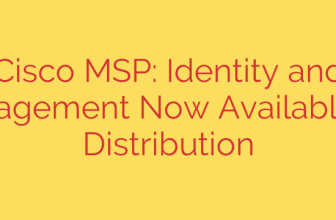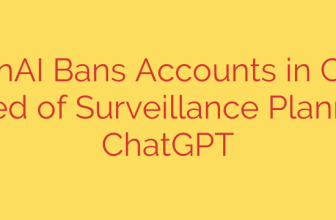
Protecting Your Data: LinkedIn Files Lawsuit Against Sophisticated Scraping Operation
In a significant move to protect user data and uphold platform integrity, LinkedIn has initiated legal action against a company accused of orchestrating a large-scale data scraping scheme. The lawsuit targets a firm that allegedly created thousands of fake user accounts to systematically harvest vast amounts of profile information from the professional networking site.
This case highlights the persistent and evolving threat of unauthorized data scraping, a practice where automated bots are used to extract information from websites. While the battle over data scraping is not new, this lawsuit shines a light on the sophisticated methods bad actors use to circumvent security measures and violate user privacy on a massive scale.
The Core of the Allegations: How the Scraping Occurred
According to the legal filing, the operation went far beyond passively viewing public profiles. The defendants are accused of actively creating a network of sham profiles to gain deeper access to the LinkedIn platform. By doing so, they allegedly agreed to LinkedIn’s User Agreement under false pretenses, only to immediately violate its terms.
These fake accounts were allegedly used to:
- Circumvent LinkedIn’s security measures designed to detect and block automated scraping.
- Harvest data from millions of user profiles, including names, titles, work histories, and photos.
- Package and sell the scraped data to third-party customers, profiting directly from the unauthorized use of user information.
LinkedIn asserts that this activity constitutes a clear breach of contract, as every user—including the operators of these fake accounts—must agree not to engage in data scraping. The lawsuit argues that the defendants knowingly and intentionally breached their contractual obligations for commercial gain.
A New Front in the War on Data Scraping
This legal action is a critical development in the ongoing debate over data ownership and privacy. It stands in contrast to previous high-profile cases that centered on the scraping of publicly accessible data. A key distinction here is the method of access. The current lawsuit focuses on the fraudulent creation of accounts to get behind LinkedIn’s login wall and access data that is not entirely public.
By creating fake accounts, the defendants are accused of gaining unauthorized access, a much clearer violation of laws like the Computer Fraud and Abuse Act (CFAA). This is a crucial difference, as it shifts the legal argument from a debate over public information to a case of fraudulent access and trespass on a private platform. This approach could set a powerful new precedent in how online platforms can combat illicit data harvesting.
What This Means for Your LinkedIn Profile
The unauthorized scraping of personal and professional data poses a significant risk to all users. When your information is harvested without your consent, it can be used for a variety of purposes you never agreed to, including:
- Unsolicited marketing and spam.
- Sophisticated phishing attacks.
- Corporate espionage and competitive analysis.
- Building “shadow profiles” on individuals without their knowledge.
This lawsuit is a reminder that the data you share on professional networks is valuable and that bad actors are constantly seeking new ways to exploit it.
Actionable Steps to Protect Your Digital Footprint
While platforms like LinkedIn work to fight these battles on a large scale, there are proactive steps you can take to enhance your own data security.
- Review Your Public Profile Settings: Navigate to your LinkedIn privacy settings and control what information is visible to non-connections and search engines. You can choose to hide specific sections of your profile from the public view.
- Be Discerning with Connection Requests: Be cautious when accepting connection requests from people you don’t know. Fake profiles are a primary tool for scrapers, and connecting with one could potentially expose more of your data.
- Enable Two-Factor Authentication (2FA): Adding 2FA to your account is one of the most effective ways to prevent unauthorized access, even if your password becomes compromised.
- Report Suspicious Activity: If you encounter a profile that seems fake or receive a suspicious message, report it to LinkedIn immediately. This helps the platform identify and remove bad actors, protecting the entire community.
Ultimately, this legal battle underscores the importance of digital vigilance. As platforms continue to strengthen their defenses, users must also remain aware of the value of their data and take the necessary steps to protect their digital identity.
Source: https://www.bleepingcomputer.com/news/legal/linkedin-sues-proapis-for-using-1m-fake-accounts-to-scrape-user-data/








